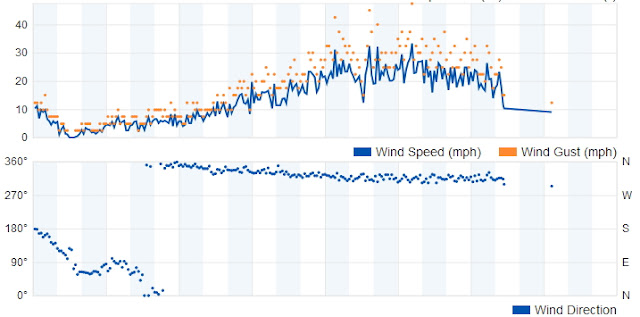These ventilators bring in fresh air without losing heat in the winter (and also without losing cool air in the summer). The main reason for installing these units is that my house is so tightly sealed that there was insufficient air exchange to be healthy. I determined this after doing a building energy audit that included a blower door test from which I learned that the total leakage area of my entire house was about 122 in.². This means that the air changes per hour were down less than 3 ACH which is considered the low threshold for healthy indoor air.
Since then, I have tightened up the house significantly. This summer I had been noticing how the air in my small bedroom felt stale after I installed the air conditioner in the window and sealed up the other window. With the door closed, there is no fresh air exchange at all in that room which is why I decided to add an ERV to that room.
These clever units work by removing air from the room and sending it through a honeycomb ceramic heat absorber. Then the fan then reverses and brings fresh air in that is warmed by the heat absorber. In my tests, I concluded that these units are about 97% efficient when the outside temperature is around freezing and indoors is in the mid-70s Fahrenheit.
The ventilators I installed previously cost me around $500 - a search for "TwinFresh Comfo" will find varoius sellers offering prices ranging from $450 to over $700.
This this time I did some research and found that they are available from Alibaba for significantly less, I paid $185 plus ocean freight shipping of about $58 and it arrived about five weeks later. The unit was well packed and comes with clear instructions and appears to be very well made.

Vitronic product photos:
The Vitonic brand appears to be functionally identical to the more expensive units in almost every detail except for the exterior vent cover. Actually, the remote control works a great deal better than those other units!
Installation is relatively simple, I just cut a 6" hole in the exterior wall and installed the vent and tube through the wall from the outside and then mounted the interior bracket for the inside unit.

Cutting 6 inch diameter hole inside
There is a three button control panel on the unit itself, but it is the remote control that one generally uses. This remote is identical to the previous units I had used except that it seems to use radio rather than line of sight infrared which means it has a range of more than 20 feet. The other remotes only work within a foot or two which was very disappointing.
The remote features include three basic fan speeds: a night mode where the fan automatically drops to the lowest speed when the room is dark and three different airflow options, in, out, and bidirectional (energy recovery mode). It is helpful to have a vent that can remove air from the room - or bring in fresh air in case of a strong odor. It also offers three levels of humidity control and I have absolutely no idea how this is accomplished. But it is this feature that distinguishes an energy recovery ventilator from a heat recovery ventilator and makes it more efficient and usable in humid situations.
I would only recommend installing heat (or energy) recovery ventilators if you are certain that your house is sealed up so tightly that air exchanges and air quality suffer. The only other option for tightly sealed houses to install an entire heat recovery ventilation system which requires running ducts throughout the house and a large central blower unit that would be typically mounted in the attic or basement. The cost of this type of system as a retrofit is prohibitive and can result in unsightly ducts everywhere, but it makes more sense when you're building a new home.







































